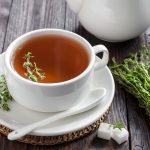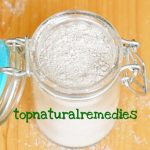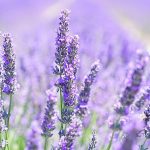Spikenard – The Sacred Balancing Herb of the Ancients
Spikenard (Nardostachys jatamansi) is an aromatic plant native of the Himalayas of Nepal, China and India, whose amber-colored essential oil was sacred not only to Indians, but also to Egyptians, Greeks and Hebrews. The traditional uses of spikenard, as an anti-inflammatory and a sedative (having the power to bring about a sacred balance in the body and spirit of those who use it), are being confirmed in the present by numerous scientific studies.

Contents
Sacred tradition
Spikenard is an ingredient for Kyphi, the sacred Egyptian temple perfume. It was also found as the main component of a solid ointment used in the embalming of Tutankhamun.
Spikenard was also part of the sacred incense offered in the Jewish Temple of Jerusalem and is mentioned a number of times in the Tanakh (the canon of the Hebrew Bible).
In Book 18 Homer’s Iliad, it is said that spikenard was used by Achiles to perfume the body of Patroklos.
In the Gospel of John we can read that spikenard was used in Bethany by Mary, sister of Lazarus, to anoint Jesus’ feet.
Spikenard is, in the hispanic iconographic tradition, a symbol associated with St. Joseph, this, according to the Vatican, being the reason for which Pope Francis has chosen to include it in its papal coat of arms.
Modern scientific studies
- Anti-inflammatory properties
- A study published in Evidence-based Complementary and Alternative Medicine in 2014 demonstrated “the beneficial effects of fractions of Nardostachys jatamansi on lipopolysaccharide-induced inflammatory response.”
- A study published in Pancreas in 2013 demonstrated “the beneficial effects of Nardostachys jatamansi extract on diet-induced severe acute pancreatitis.”
- Sedative, neuroprotective and nootropic properties
- A study published in Journal of Natural Medicines in 2008 demonstrated the sedative effects of vapor inhalation of spikenard extract and identified the active component as (+)-calarene.
- A study published in Pharmacology, Biochemistry and Behavior in 2006 showed that “the extract of Nardostachys jatamansi might be helpful in attenuating Parkinsonism.”
- A study published in Journal of Medicinal Food in 2006 concluded that “Nardostachys jatamansi might prove to be a useful memory restorative agent in the treatment of dementia seen in elderly persons.”
- Antioxidant and antistress properties
- The results of a study published in Indian Journal of Biochemistry and Biophysics in 2009 suggest that “the Nardostachys jatamansi extract possesses significant anti-stress activity, which may be due to its antioxidant activity.”
- A study published in Journal of Natural Science, Biology and Medicine in 2012 demonstrated that “Nardostachys jatamansi extract prevents chronic restraint stress-induced learning and memory deficits.”
Precautions
Never use any essential oil directly on the skin. Dilute it with sunflower, olive, sesame or sweet almond oil (1 drop of essential oil per 1 teaspoon of carrier oil).
For bath, dilute 8-10 drops of essential oil in a cup of epsom salt or milk.
For internal use, dilute 1 drop of essential oil in 1 teaspoon of honey.



